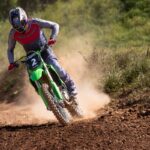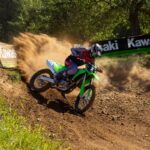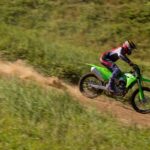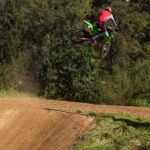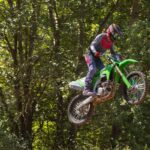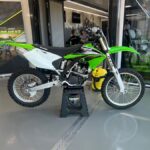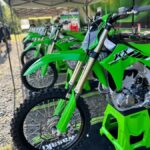The 250F Kawasaki platform has been at the sharp end of the field since its inception back in 2004. It exploded onto the scene with Mitch Payton’s Monster Energy Pro Circuit team. A team of Ivan Tedesco, Matt Walker, and Stephen Roncada would contest the AMA West Coast series and AMA Pro Lites Motocross class all aboard the new KX250F. Tedesco would go on to win 3 championships in its first 2 years proving that the KX250F was a force to be reckoned with.
Since then they have had success on both sides of the pond in both pro and amateur championships, most recently with Adam Cianciarulo winning the 2019 Pro Motocross championship. It has been a dry period for Kawasaki in the MX2 class but they are hoping that the all-new 2025 KX250 will get them back to their winning ways.
The new machine has had most of the same upgrades as the 2024 KX450 which has been very well received throughout the paddock. The first noticeable change is of course the plastics. These now have a much smoother finish with fewer edges to snag your gear on. They also look a lot better in general. A simplistic livery and predominantly green in colour, it really has a factory vibe about it.
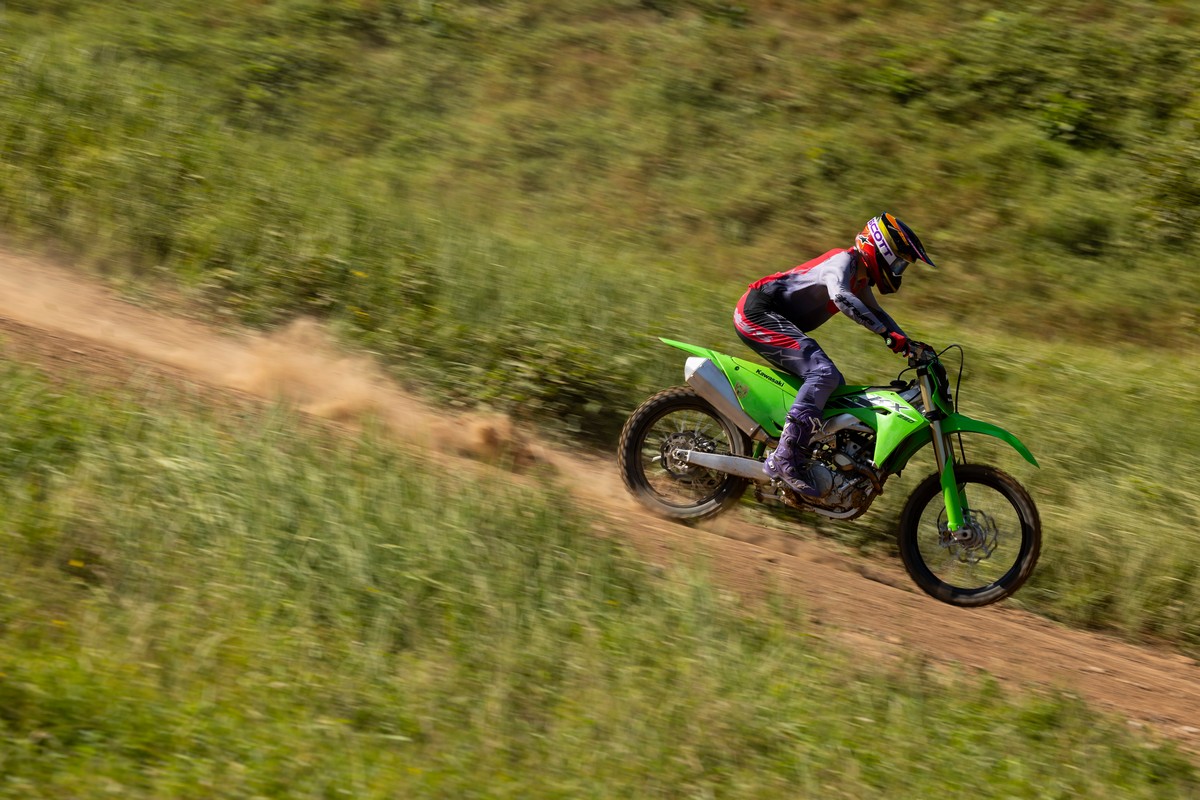
The next thing you are most likely to notice is the air box. A whole new airbox compared to the 2024 model, and looks similar to the KX450, but don’t be fooled, it is not the same. Those who are up to date with the 450 will know there was a rubber bung in the air box to stop water and dust from getting in. But, it also stopped air from getting in. Less air, less power. For the KX250 they have changed this to a plastic guard. So it will still help protect against dust and water but it won’t stop air from getting to the filter. The filter is also more of a cone shape compared to the flat rectangle on the 450. So that means the filters are not interchangeable. The plastic guard does however make it tricky to get the filter in and out, so if you have bigger hands you may struggle with this and want to find a solution such as removing the guard.
Another big change to the 2025 model is the addition of the mapping box on the bars. The older models used to have coloured blocks that you could change depending on how aggressively you wanted the bike. But keeping with the times Kawasaki has added the box this can easily be changed at the press of a button.
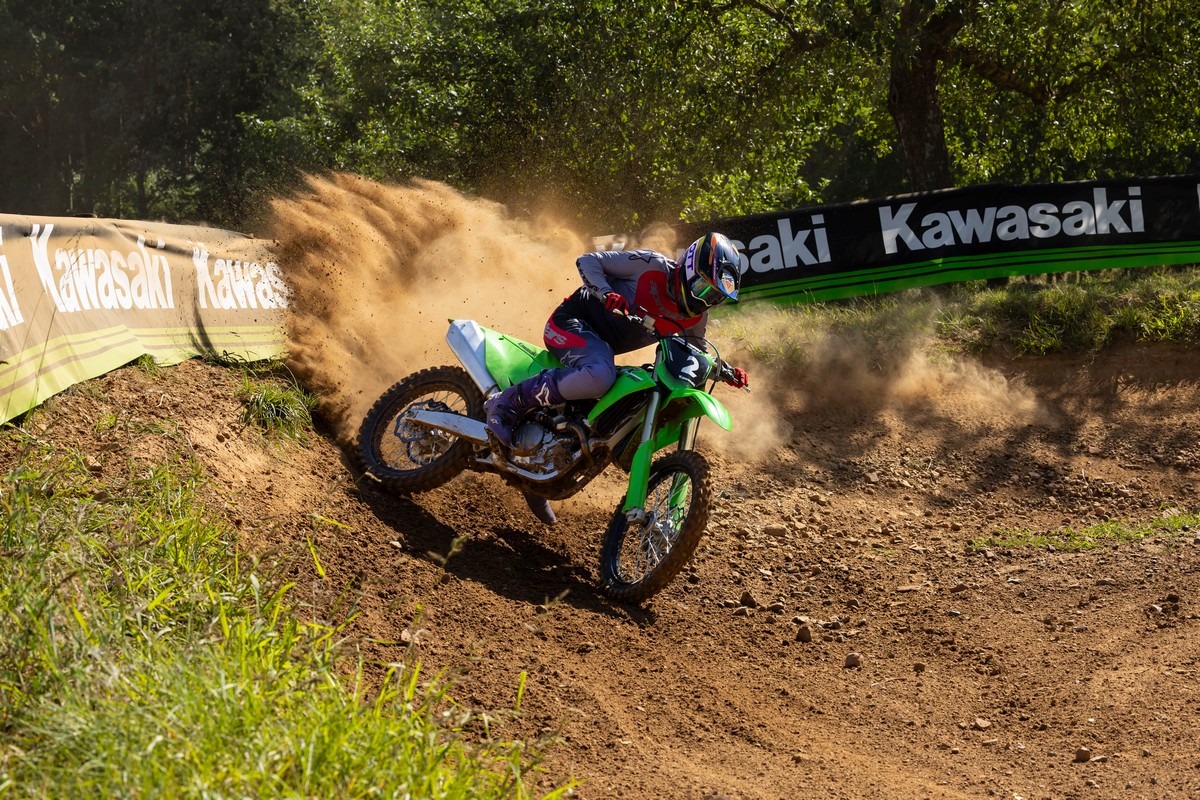
Along with the box comes the KX Rideology app. This is an app on your phone that connects to your bike so you can personalise your maps, as well as keep a log of hours, settings, and what maps work on which tracks.
The easiest way to connect your bike to your phone is by pressing the start button once. This will start the bikes wifi. Then on your phone in the wifi section click on the bike. You will then be connected to your bike. At this point open the KX radiology app and input the map you want to use. It is that simple!

You can select two maps to keep in your bike at any one time, and you can switch between the two by pressing the blue M button on the box. When you first get your KX250 it will come pre-loaded with a standard map, then if you press the button (blue light on) this is a more toned-down map. You can change both of these to whatever suits you. I chose a more aggressive map to start with when the track was grippy and had moisture, but as the track dried out I went for a less aggressive map. The only downside of this is you cannot change maps mid-way through a session unless you come to a stop. They are working on a solution to this so you could potentially have a map that is really aggressive for the first lap and then switch for the rest of the race to a more manageable power.
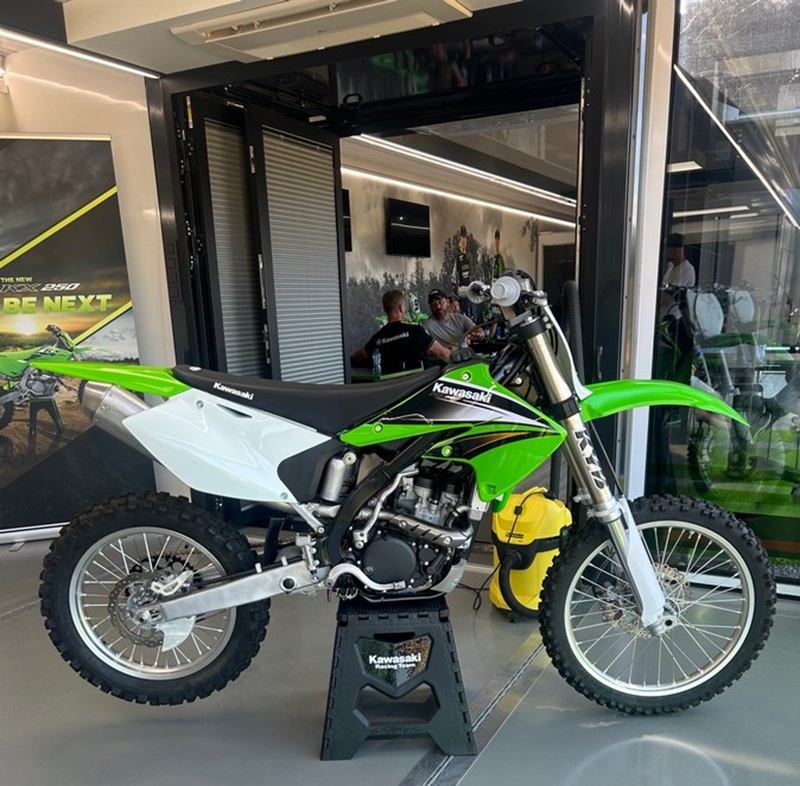
On the mapping box, you can also select 3 kinds of traction control (KTRC). With no light the traction control is off, if you press the green “T” a green light will appear. This will lessen your revs when you put the power on so you do not spin the back wheel. This works well on hard-packed surfaces. If you press the button again the green light will flash. This is maximum traction control. Your revs will be greatly decreased. This is really only necessary in very muddy or wet, slippery conditions.
With it being a 250 you want to try and keep the revs in the meat of the power so be careful using the KTRC so that you don’t drop off of the revs and have to keep building them back up. My opinion is that the KTRC works well in wet conditions but isn’t necessary when the track is dry.
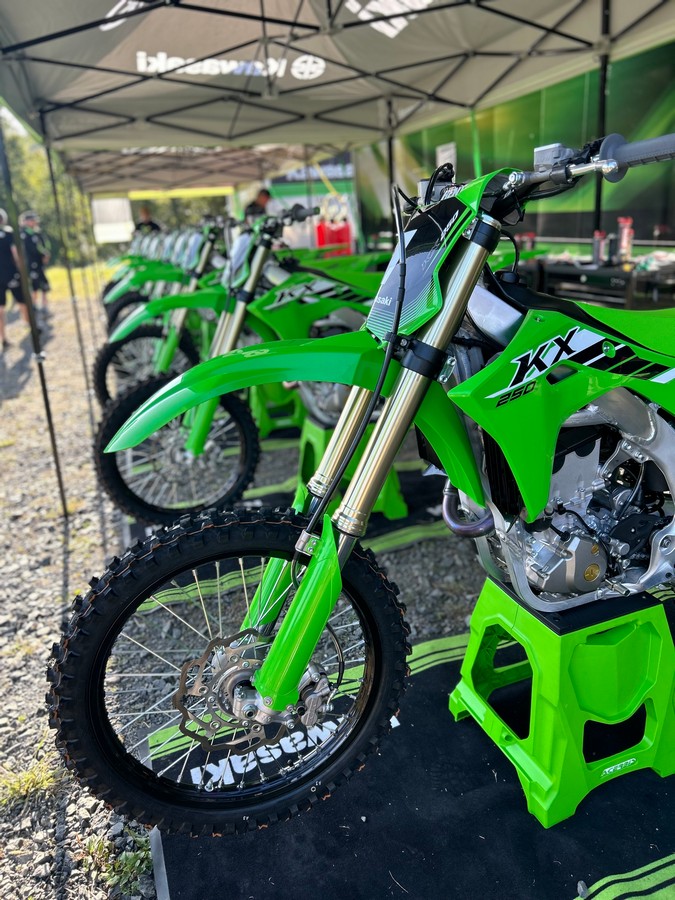
Another thing you can do on the box is to set your lunch control. This can be set by holding the blue “M” and green “T” simultaneously. You will see a purple light and this means the launch control is set. Similar to traction control this retards the ignition on the start to give you maximum grip when the gate drops. Also like the KTRC, I don’t think this is necessary on a normal start as you want maximum revs on a 250 when the gate drops. If you are starting on concrete or it is very wet this will work wonders and you will really notice the difference. All of the observations are from me riding the bike. I’m 5ft11” and around 75kgdepending on the time of day. If you are a skinny guy or girl who weighs 60kg you may benefit more from the KTRC and launch control than I did, as it won’t be trying to pull so much weight around.
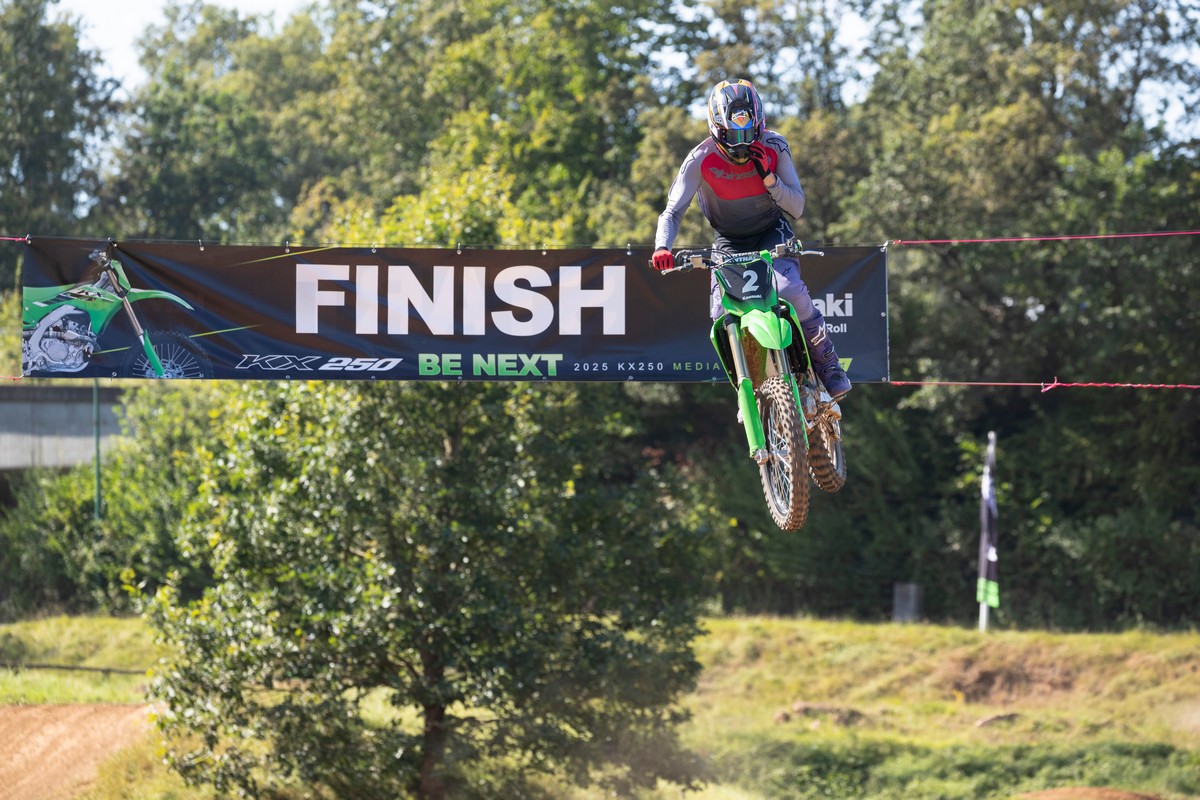
Kawasaki has really focused on the power of this model of machine. The symmetrically aligned intake and exhaust port increases the power output, as well as the new twin injectors and throttle body design all band together to get as much out of this engine as possible. However, due to new noise regulations by the FIM reducing the limit from 112db to 109db, Kawasaki has had to alter the exhaust to meet this new standard and this has robbed all the new power. So even though the BHP is the same as the 2024 model it will meet all new noise regulations coming in that all manufacturers will have to abide by.
The handling of a KX has long been the benchmark for many brands. And the new KX250 is no different. The updated frame and the switch from KYB to SHOWA (The same as the 450) give the bike a very trusting nature. The frame is very compliant over small breaking and acceleration bumps. Giving you a lot of confidence going into the corners. I found that coming into some of the corners at the bottom of the hills, even when breaking while turning the bike held up well and didn’t feel like the suspension was pushing through the stroke. On some of the faster sections the frame felt a little wollowy and like it was fighting to keep traction, but you can’t have a great cornering bike without sacrificing something somewhere else. Personally, I would rather have a bike that turns better than a bike that goes well down a straight.
If this is something that bothers you, due to Kawasakis ERGO-FIT you can change the 2 side engine mounts. There are 2 additional holes on either side that cater to a different mount. This is a Kawasaki part that can be ordered and will make the frame more rigid.
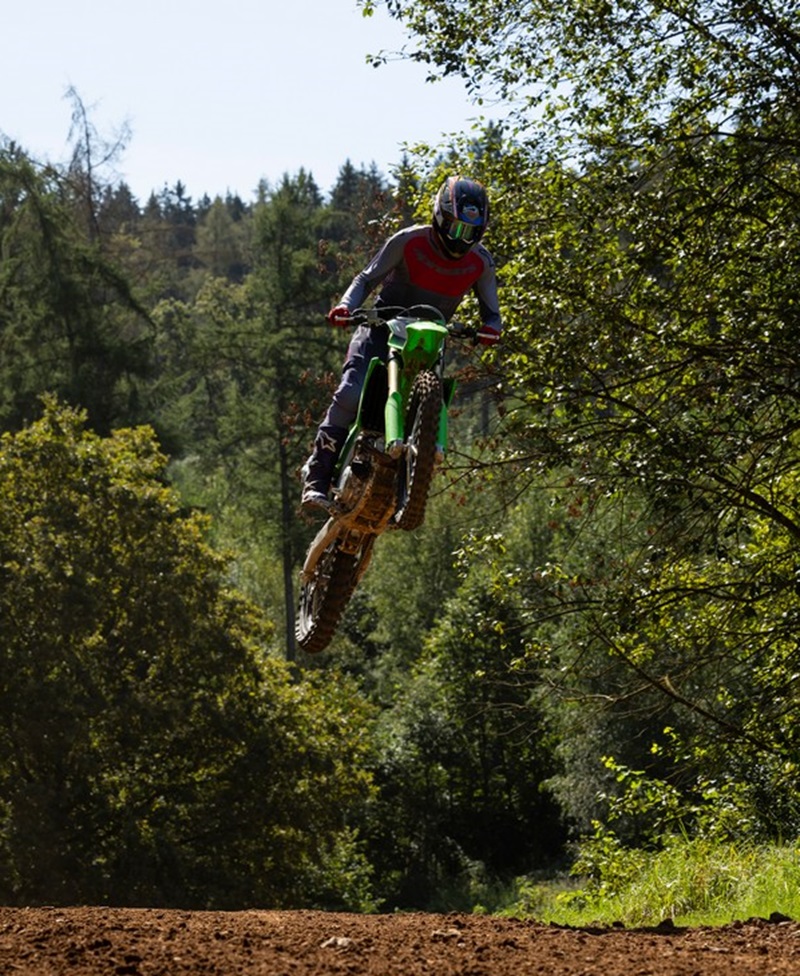
The biggest thing I found when riding it was that it likes to be revved. If you’re a rider that likes to lug the bike in 3rd gear more like a 450, then this isn’t for you. The Austrian bikes will pull 3rd gear in most places but the Kawasaki likes to be up in the RPMs. I found myself changing gear a lot and using the clutch more than I usually would just to make sure I stayed in that rev range. If you can keep the bike in the meat of the power then it absolutely rips. In my opinion, you ride the KX250 much more like a 125cc than a normal 4-stroke. But due to the bike being so easy and compliant to ride this doesn’t tire you out. If you try to ride a KTM for example like a 125, unless you are incredibly fit you will begin to fatigue after 10 minutes. I did 20 minutes comfortably and enjoyed myself doing it.
Overall the 2025 KX250 is a great package. It has a strong base that you would be able to build a bike that would be competitive at the top level of the sport. But it also is great for your average rider who just wants to enjoy themselves. If I had to pick the type of person that this bike suits the most I would most likely say someone justmoving up from the big wheel 85cc class or off of a 125cc. So if you are looking atmaking the move up to an MX2 bike, I highly recommend the KX250. Likewise, ifyou just want to go out and enjoy your riding, this bike allows you to do that.
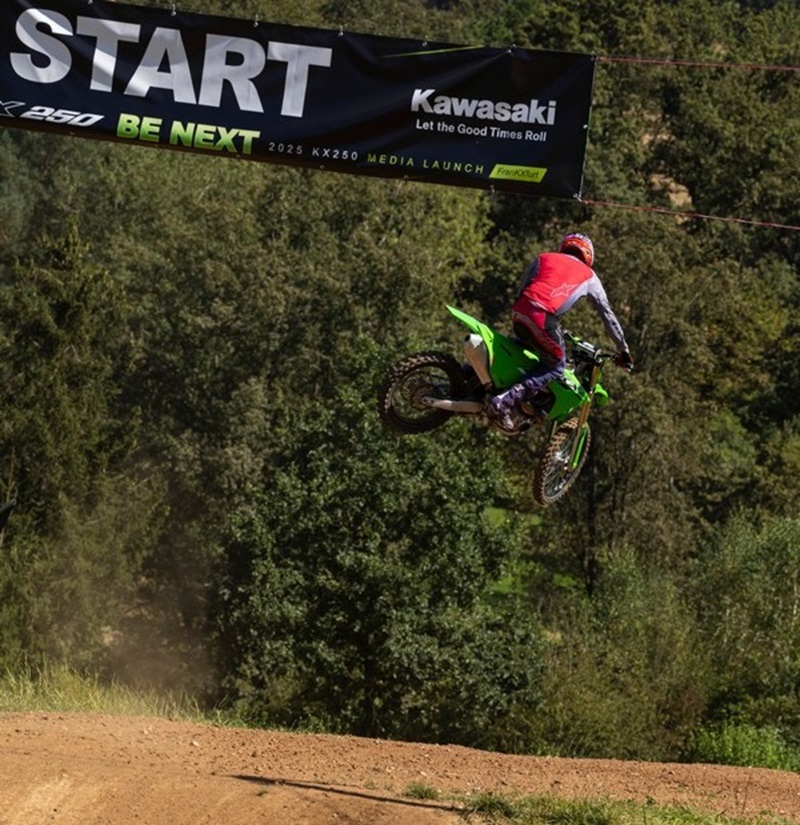
Some helpful information:
-Dunlop MX34 front and rear
-Braking discs
-Lock on ODI grips
-NISSIN brakes
-Renthal Fatbar
-Fuel tank capacity of 6.2L
-Weight without fuel 105kg
-Height 1265cm
-49mm SHOWA forks
-0.8L engine oil capacity (0.9L with oil filter change)
Tested and written by Brad Wheeler


